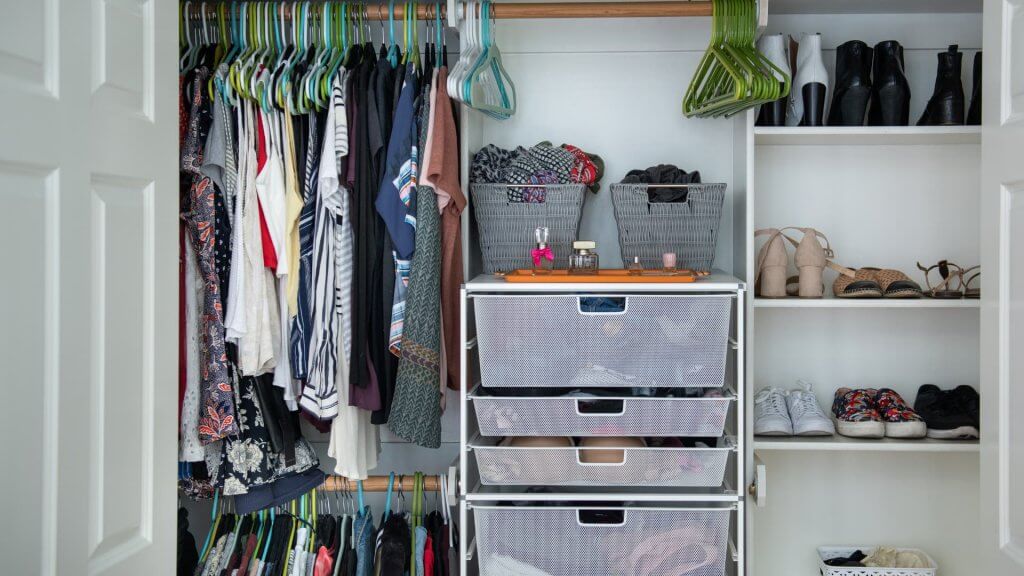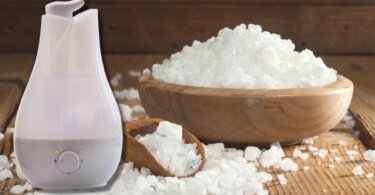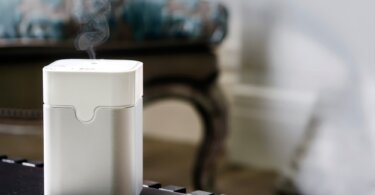Do you ever feel like your wardrobe is a little too damp? You’re not alone. In fact, humidity can be a big problem for your clothes – and your health. Fortunately, there’s an easy solution: a wardrobe dehumidifier. Keep reading to find out the answer to your question: do I need a wardrobe dehumidifier and how to choose the best model for your needs.
So, is a wardrobe dehumidifier essential? Not really; you don’t always need a wardrobe dehumidifier. However, if you live in an area with high humidity, condensation can form on clothes stored in your wardrobe. This can cause musty odors and damage to your clothing. A dehumidifier will help remove excess moisture from the air, preventing condensation from forming on your clothes.
But since things aren’t always the same, you shouldn’t stick to a yes or no for your precious wardrobe. Instead, you should learn everything a wardrobe dehumidifier can do for your closet and decide accordingly. Stick around, and let’s learn more about wardrobe dehumidifiers!

How Do Dehumidifiers for Closets Work?
A closet dehumidifier works by drawing in moist air from the wardrobe, heating it up, and cooling it down. By doing this, the dehumidifier causes water vapors in the air to condense into liquid form, which is then collected in a reservoir (usually a plastic pouch).
Some dehumidifier models also have a built-in fan that helps circulate the dry air around the wardrobe to speed up the drying process.
Also, some dehumidifiers for closets come with a humidity indicator that lets you know when the excess moisture level in the wardrobe has been reduced to your desired level.
Benefits of Closet Dehumidifiers
Mold and mildew can cause clothes to become stained and faded, and they can also cause them to smell bad.
A wardrobe dehumidifier can help prevent this by removing the moisture from the air in your closet, which will keep your clothes dry and free of mold and mildew.
If you often find a mildewy smell in your closet or any other storage cabinet, getting fragrance-free drying crystals or calcium-chloride crystals can help save your precious items. Since these crystals suck excess humidity from your closet, mold or algal growth is significantly reduced.
Types of Dehumidifiers (Closet)
If you’re always looking for ways to improve your indoor air quality, one way to do that is to get a wardrobe dehumidifier. But which one should you buy?
There are different dehumidifiers out there, so it can be tough to decide. Let’s discuss the primary dehumidifier for closet types to see which one will suit your closet better.
1. Electric Dehumidifier for Closets
An electric dehumidifier works by drawing air from the room and passing it over a cold evaporator coil. This causes the water in the air to condense on the coil, and the dehumidifier discharges this water out of the unit.
Theoretically, any dehumidifier can work as long as it can lower the temperature of the air below its dew point, which is the temperature at which water vapor starts to condense out of the air.
Electric dehumidifiers are distinct from other humidifiers because they don’t use any chemicals or absorbents to treat the humid air. They simply remove ounces of water from it using a motor.
A portable dehumidifier will come with a storage container and a yellow indicator light to predict humidity-related issues in your closet.
Once the humidity level in your closet space crosses the bearable level, your dehumidifier’s built-in LED light will start blinking. And it will start absorbing moisture from its surroundings.
This lightweight dehumidifier will stop working after reaching its approximate absorption capacity, thanks to its auto shut-off function.
2. Drying Crystals
Calcium chloride drying crystals are often used in closets to absorb moisture and prevent mold and mildew growth. The crystals work by absorbing water vapor from the air, preventing the formation of mold and mildew.
When calcium chloride is mixed with water, it forms a co-solvent that can absorb water vapor much more effectively than either calcium chloride or water alone. This makes it an ideal material for use in drying closets, as it can quickly remove moisture from the air without the need for ventilation.
The main advantage of using calcium chloride over other materials is that it is non-toxic and does not release any hazardous chemicals. These crystals are better for closets where you don’t have electrical outlets and need a wireless dehumidifier. Since these dehumidifying crystals come with moisture bags, you don’t have to worry about their functioning.
Simply hang these renewable closet dehumidifiers in your wardrobe and see them absorbing excess moisture from the air.
However, be mindful that despite being an excellent product, these crystals can’t compete with powerful units and cover the narrower square footage.
If you need a cheap closet dehumidifier, these crystals will do. For stronger moisture absorption capacity, you’ll need a built-in larger dehumidifier or crystals with an extra-large tank.
When To Get a Closet Dehumidifier?
Excess humidity can cause all sorts of issues, from ruined clothes to mold and mildew. Luckily, there’s an easy solution: a closet dehumidifier. But when is the right time to get a lightweight dehumidifier? Here are some signs that you need this excellent product:
Mold & Mildew
If you’ve got mold and mildew in your closet, the best thing to do is get a dehumidifier. Dehumidifiers work by removing excess moisture from the air, which can help prevent mold and mildew from forming in the first place.
However, there are a few things to keep in mind when shopping for a dehumidifier.
- Get a right-sized dehumidifier for your space – otherwise, it won’t be effective.
- Empty the dehumidifier’s water reservoir regularly, as mold and mildew love humid environments.
- Try to keep your closet as clean and clutter-free as possible, as mold and mildew can easily take hold in cluttered areas.
High Humidity Levels
If your home has high humidity levels, it’s a good idea to get a closet dehumidifier. Excess humidity can cause all sorts of problems, such as mold and mildew growth, damaged furniture and fabrics, and respiratory problems.
Dehumidifiers come at various sizes and prices, so it’s essential to do your research before purchasing one. Make sure to get one that is the right size for your needs and fits comfortably in the space you want to use it. And be sure to read the reviews before purchasing.
Lack of Ventilation
If your closet lacks adequate ventilation, it’s good to get a dehumidifier. Reducing the amount of moisture in the air can help to prevent mold and mildew from growing. Additionally, it can also help keep your clothing and other items stored in your closet from becoming musty or damp.
Musty Odor
If you often notice a musty odor in your wardrobe, it’s likely due to high humidity. This can cause mold and mildew to grow, which can damage your clothes and pose a health hazard. To combat this odor-causing moisture, you need a closet dehumidifier.
A reliable closet dehumidifier helps remove excess moisture from the air in an enclosed space, such as a wardrobe or cupboard. It is especially useful in homes located in humid climates.
Your dehumidifier’s dehydration system works by drawing moisture out of the air and into the unit itself, where it is then evaporated or expelled outside. By regularly changing your dehumidifier’s container of moisture, you can maintain a clean fragrance in your wardrobe.
Final Words
If you’re worried about your clothes or other items getting ruined by mold or mildew, a closet dehumidifier can help. Keeping the air in your closet dry can prevent mold and mildew from forming.
Additionally, if you suffer from allergies, a dehumidifier can help reduce the amount of dust and mold spores in the air, which can improve your symptoms. Whether you’re looking to protect your belongings or improve your health, a closet dehumidifier is a great option.
FAQs
What are the drawbacks of storing clothes in a closet without a dehumidifier?
The main drawback of storing items in a closet without a dehumidifier is that the items may become damaged by moisture. If the humidity in the air is high, the items in the closet will absorb excess moisture, which can cause them to warp, rot, or get musty.
Over time, this can ruin your belongings and make them worthless. Additionally, stored items may develop musty odors if not properly ventilated.
By keeping the air inside your closet dry, you can extend the life of your clothes and other belongings and prevent musty odors from developing.
What are the features of a closet dehumidifier?
A closet dehumidifier is a small, portable dehumidifier designed to be used in a small space, such as a closet.
These units are typically very small and low-powered, making them ideal for use in a confined space.
They work by drawing moist air into the unit, where the moisture is then removed and deposited in the water tank.
Closet dehumidifiers are a great option for those who need to dehumidify a small space regularly. They are also very affordable, making them an economical choice for those on a tight budget.
What are the benefits of dehumidifiers?
A closet dehumidifier can keep your clothes from getting mildewy and help to protect them from damage.
It can also help keep your closet from becoming a breeding ground for dust mites, which can cause allergies.
Can I use a dehumidifier in my closet?
Yes, you can use a dehumidifier in your closet. Dehumidifiers are designed to remove moisture from the air, so they can help reduce the amount of humidity in your closet.
Just make sure to empty the water reservoir regularly and keep the unit away from any clothes or other items that could be damaged by condensation.
Related article: Do I Need a Dehumidifier in Every Room?







Leave a Comment